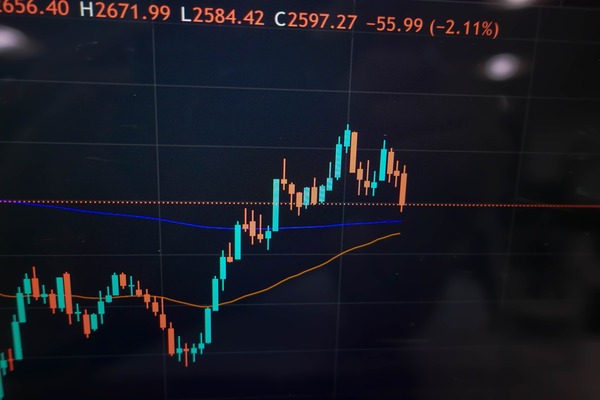Learning stock market trading is a disciplined and systematic pursuit that requires a clear understanding of markets, strategies, risk management, and psychology. It is essential for beginners to approach trading with realistic expectations and a structured plan.
Key points to focus on at the beginning:
Develop a solid understanding of basic market concepts, such as shares, indices, and exchanges.
Recognise common misconceptions about trading, including the belief that profits are guaranteed.
Cultivate the right mindset, which includes patience, disc ipline, and long-term thinking.
Prepare to commit time to both theoretical learning and practical practice through simulation or small-scale live trading.
This guide gives a step by step pathway from fundamentals to advanced practice, grounded in recent data on retail participation, performance and market structure.
Understanding Market Mechanics for Effective Stock Trading

A professional trader must understand the structure of the markets and the mechanics of trading. This knowledge enables better execution and strategy development.
Important aspects include:
Exchanges and Market Structure:
Learn how major stock exchanges operate and the differences between electronic and floor trading.
Order Types:
Market orders execute immediately, limit orders execute at a specified price, and stop orders trigger when conditions are met.
Liquidity and Volatility:
High liquidity allows easier entry and exit of trades, while volatility affects risk and potential profit.
Market Participants:
Institutional investors, retail traders, and market makers all influence short-term price movements.
Key Concepts Every Learner Should Know in Stock Market Trading
Building a foundational knowledge of terms and concepts is crucial for effective trading.
| Term |
Short Explanation |
| Market capitalisation |
The total market value of a company calculated by multiplying share price by shares outstanding. |
| Liquidity |
The ease with which an asset can be bought or sold without moving the price materially. |
| Volatility |
The degree of variation in price over time; higher volatility implies larger price swings. |
| Order types |
Market orders execute immediately; limit orders execute at a specified price or better; stop orders become market or limit orders once a trigger is met. |
Additional points include:
Understand how spreads affect transaction costs.
Learn how to read tickers, level two data, and time and sales records.
Recognise the role of daily volume and open interest in price dynamics.
Using Fundamental Analysis to Strengthen Your Stock Trading Skills

Fundamental analysis helps you identify companies with sustainable earnings and reasonable valuations.
It involves learning how to interpret income statements, balance sheets and cash flow statements, and applying ratios such as price to earnings, return on equity and free cash flow yield to assess the strength and efficiency of different businesses.
It also requires an understanding of key macroeconomic indicators and the ways in which interest rates and growth expectations influence valuations. Strong fundamental work supports clearer position selection and reduces reliance on market noise.
Mastering Technical Analysis for Successful Stock Trading
Effective trading systems are built on clearly defined entry, exit and position sizing rules. Ideas are translated into testable strategies and evaluated through backtesting on historical data, followed by forward testing on a paper account to see whether assumptions hold in real-time conditions.
Simpler parameter choices help reduce the risk of overfitting and improve robustness. Expectancy metrics such as win rate, average win to loss ratio and maximum drawdown provide a realistic picture of how a strategy performs across different market environments.
Selecting Your Trading Style to Enhance Learning and Results
Selecting a trading style is decisive for your routine and capital needs. The following table contrasts common styles to guide choice.
| Trading Style |
Time Horizon |
Typical Capital Requirement |
Key Skills Required |
| Day trading |
Intraday |
Medium to high depending on jurisdiction rules |
Fast execution, intraday risk control, technical reading |
| Swing trading |
Days to weeks |
Low to medium |
Pattern recognition, trend analysis, position sizing |
| Position trading |
Weeks to months |
Low |
Fundamental analysis, macro perspective, patience |
| Long term investing |
Months to years |
Variable |
Company valuation, portfolio construction, patience |
Match a style to your available time, temperament and capital. Start conservatively and scale up as competence increases.
Developing and Testing Trading Strategies Effectively
A structured strategy is the backbone of successful trading.
Steps to create and validate a strategy:
Define entry and exit rules clearly.
Establish position sizing based on risk per trade and account size.
Backtest strategies on historical data to understand potential performance.
Use forward testing or paper trading to confirm results under live conditions.
Maintain a trading journal to track metrics, including win rate, average win/loss, and drawdowns.
Risk Management Techniques for Learners in Stock Trading
Risk control ultimately determines survival in the markets. Effective risk management typically involves the use of stop losses, clearly defined daily loss limits and position sizes that reflect account equity and prevailing volatility.
Diversification across uncorrelated positions can help reduce concentration risk when conditions allow. Sound practice also relies on committing only risk capital that can be lost without placing personal finances under strain.
Tools, Platforms, and Data Sources to Support Learning in Stock Trading

Choose a reliable broker with transparent fees and good execution. Use established charting software and scan the market for setups. Subscribe to reputable news feeds and economic calendars. For learning, paper trading accounts replicate order entry mechanics without financial consequence. Consider premium data only after you have mastered analysis techniques.
Key recent metrics are relevant to platform choice. Popular retail trading platforms have scaled user bases, which influences order routing, liquidity and feature development. Robinhood reported about 25.9 million funded accounts in mid 2025. which illustrates the scale of retail engagement on certain platforms.
Building a Daily Routine for Consistent Stock Trading Practice
Consistency is key to learning and improving in trading.
Daily routine may include:
Pre-Market Preparation: Review news, update watchlists, identify potential trades.
Trading Session: Execute trades according to predefined rules, monitor positions.
Post-Market Review: Analyse trade outcomes, update journals, evaluate strategy performance.
Weekly Learning: Identify patterns in mistakes and plan improvement tasks.
Developing Psychological Skills for Trading Success
Emotional control and discipline are core trading skills. Traders commonly face fear, greed and overconfidence. Use checklist driven entries and fixed position sizing to minimise emotion based decisions. Accept that losses are a part of trading and focus on process consistency rather than single trade outcomes.
Common Pitfalls and Mistakes for New Stock Traders
Avoid these frequent mistakes to protect capital and learning:
Overtrading and chasing market noise.
Ignoring stop losses or risk management rules.
Following tips from unverified sources or social media blindly.
Neglecting journaling and self-review.
Evidence-Based Insights into Retail Trading Outcomes
| Finding |
Source Summary |
| High attrition and low long term success among day traders |
Multiple studies and industry analyses report that a large majority of day traders either stop trading within a short period or experience losses. Estimates vary by sample and market but indicate low long term success rates. |
| Large retail inflows into equities in recent years |
Retail flows into equities were substantial in recent market cycles with notable net purchases by individual investors in 2024 and 2025. These flows affect liquidity and price dynamics. |
A 12-Month Action Plan for Learning Stock Market Trading

Month 1 to 3. Learn core terminology, market mechanics and set up a demo trading account. Begin reading foundational books and follow a defined curriculum.
Month 4 to 6. Build and backtest a simple strategy. Start small live trading with strict risk limits. Maintain a detailed journal.
Month 7 to 12. Optimise process, expand market knowledge, study psychology and consider diversification into options or other instruments only after documented competency.
Keep progress measurable by tracking metrics such as monthly net return, maximum drawdown and trade expectancy.
Conclusion
Learning how to learn stock market trading is a long term endeavour that rewards discipline, rigorous testing and emotional control. Recent data shows that retail participation is large and growing, but success requires methodical study and strong risk management. Use the plan in this guide as a scaffold and adapt it to your goals and constraints.
Frequently Asked Questions
Q1. How long will it take to become a competent trader?
Most learners acquire basic competence within six to twelve months. Consistent profitability typically takes several years of disciplined study, practice, psychological training, and strict risk management strategies.
Q2. How much capital do I need to start trading?
Capital requirements depend on style and regulations. Beginners should start with an amount they can afford to lose. Small positions or fractional shares reduce risk while building practical experience.
Q3. Should I focus on technical analysis or fundamental analysis?
Both are valuable. Technical analysis improves timing, while fundamentals guide selection of quality investments. Beginners should balance learning both according to their trading style and time horizon.
Q4. Is paper trading useful when learning trading?
Paper trading is excellent for practising execution and verifying strategy mechanics without financial risk. Emotional realism is limited, so transitioning to small live positions after consistent performance is essential.
Q5. How do I reduce the chance of losing money quickly?
Use strict position sizing, stop losses, and controlled leverage. Risk only a small percentage of capital per trade, follow tested strategies, and avoid impulsive decisions.
Q6. What are the most common beginner mistakes?
Overtrading, neglecting risk management, and following social media tips blindly are common. Keeping a trading journal and sticking to documented rules helps avoid these pitfalls.
Q7. When should I consider advanced techniques such as options or automation?
Only after consistent results with basic strategies. Advanced instruments carry additional complexity and risk. Master fundamentals, strategy execution, and psychology before expanding into these areas.
Disclaimer: This material is for general information purposes only and is not intended as (and should not be considered to be) financial, investment or other advice on which reliance should be placed. No opinion given in the material constitutes a recommendation by EBC or the author that any particular investment, security, transaction or investment strategy is suitable for any specific person.

























